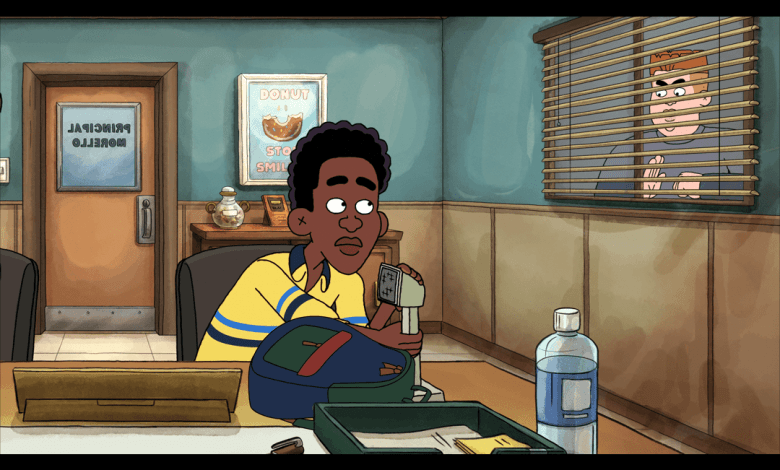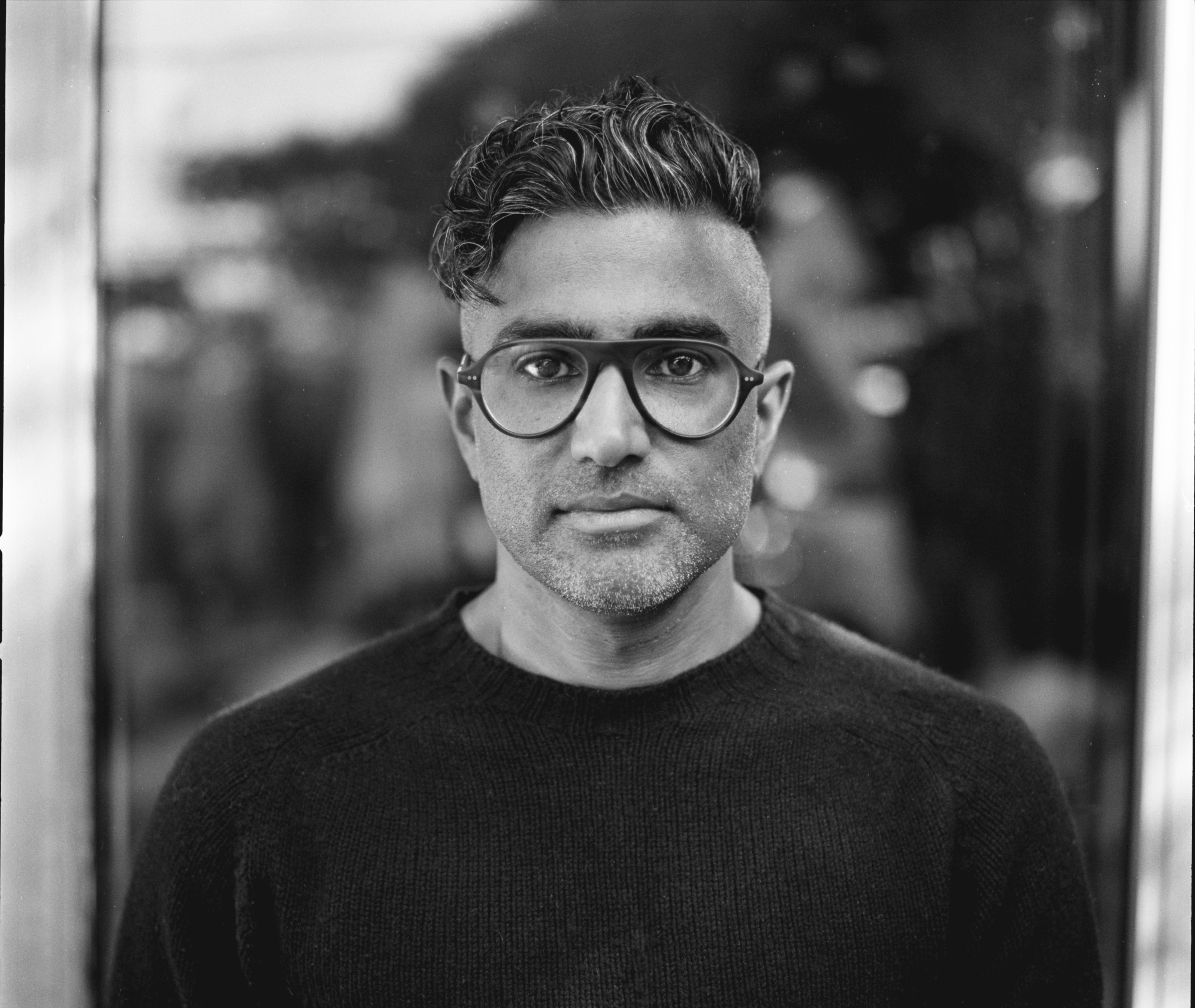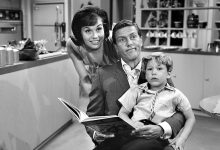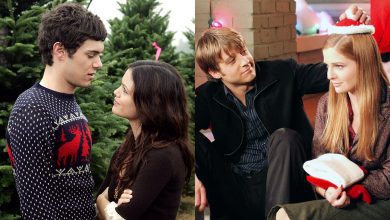Fans of OG Show Will be Pleased

After years of Rochelle Rock (Tichina Arnold) threatening to slap her son Chris, then played by Tyler James Williams, into the middle of next week/last night/another nationality/or any other random idiom whenever he acted out on the UPN/CW sitcom Everybody Hates Chris, the matriarch of the Rock family has finally made good on her promise. In Everybody Still Hates Chris, which premiered on Comedy Central Sept. 25, Rochelle threatens to slap Chris into animation after he fails the GED test. And that’s exactly how the animated sequel to the 2005-2009 sitcom about Chris Rock’s childhood begins.
“I really nerded out on the idea of making a show that would seamlessly connect with the original, knowing that: Look, we’re streaming now,” showrunner Sanjay Shah tells The Hollywood Reporter. “The original show sits on these platforms, and I was just thinking, as a fan myself, if I was watching the original, I would want it to flow right into the animated version and make sense of why we were going live-action to animated. I didn’t want to just start animated and not explain it.”
Intentionally not a reboot of the original comedy — “everybody hates a reboot,” adult Chris jokes in the pilot episode — the animated series sees most of the show’s original characters return, like Arnold, who now voices Rochelle, Terry Crews, who continues his portrayal of Julius Rock, Jackée Harry, who stars as Rochelle’s friend Vanessa, and Jacqueline Mazarella as teacher Vivian Morello, in addition to Chris who will once again narrate the series as his adult self. The show also introduces new voices like Tim Johnson Jr., who now portrays a teenage Chris, and Terrence Little Gardenhigh and Ozioma Akagha who voice his brother and sister Drew and Tonya. A host of celebrity guest star appearances are also lined up, from Busta Rhymes, who can be heard voicing graffiti wall art in the pilot episode, to Ayo Edebiri and Natasha Rothwell, who are set to have roles in later episodes.
The sequel received a 20-episode order out of the gate, with the first 10 episodes airing in two-episode pairings weekly for five weeks, and the remaining 10 episodes set to debut at a later date.
Below, Shah talks with THR about putting together his dream writers room, the one cast member who was a bit hesitant about the sequel and the secret weapon of Chris Rock.
***
This has been a bit of a long time in the making, with the show first announced in 2021. How and when did you come on board?
I met Chris over the pandemic. I was working at Pixar on a project, and I heard that he was looking for takes on a reboot, and I initially said no until I heard he wanted to do an animated reboot. To me, that meant we are going to do something fresh and unique, that could possibly be its own permutation of the original show. That’s what really appealed to me. And then from our first meeting, we really connected. We had a lot of overlap in some of our personal history and the way we were brought up. And then we had a shared vision for what an animated version of the show could look like and why it needed to be animated.

The transition from the live-action series to the animated sequel is seamless. Talk about writing the pilot.
That was the thing that I was most excited about in pitching to Chris my take. I said, “I want to start seconds after the original ended,” and I had that joke to explain why we’re starting seconds afterwards, which was really appealing to him. That got a laugh, and I felt like I kind of had him on board from that point. I really nerded out on the idea of making a show that would seamlessly connect with the original, knowing that, look, we’re streaming now. The original show sits on these platforms, and I was just thinking as a fan myself, if I was watching the original, I would want it to flow right into the animated version and make sense why we were going live-action to animated. I didn’t want to just start animated and not explain it. We could have done it, the audience would have caught up fine, but I wanted it to live in the language of the show, building on a running gag that has been part of the show since the beginning in 2005.
Was there ever a thought to put the story in present time like the recent Good Times reboot?
No, I don’t think it was ever part of a conversation with Chris. It didn’t appeal to me because I want to know about the before Chris, not the today Chris. The today Chris is a celebrity, and the before Chris, the Chris who is still coming up, is an everyman. And I know Chris feels the same way. I’ve heard him say as much in interviews. The minute he becomes famous, he’s no longer an everyman. To go into that part of his life is interesting, but it’s interesting for an episode. It’s interesting for a movie, but not for a series.
I want to see the Chris who is the Black Charlie Brown, which is how he describes the character. One of the things that I grew up reading was Peanuts, and you’re always like, “that poor kid.” And you feel that way about Chris, but one big difference between Charlie Brown and Chris is that Chris had a straight back. So even though he’s being humiliated, there’s strength in the character, which Charlie Brown didn’t have, which is why all of us who read Peanuts had depression when we grew up (laughs). Having been in situations that real Chris had been in in school and being in primarily white institutions, and being the only minority, to see a stiff-backed person who’s getting humiliated and abused is wish-fulfilling for us who went through that. And that’s what the genius of the character design was, to me. So that’s what I wanted to write.
You brought back the show’s original writers. Did you let anybody new in the writers room?
I spent a lot of time deciding how this room was going to be composed, so there are a few original writers and then it’s mostly writers who are newer and of different generations and life experiences. This is the second time I’ve been a showrunner, and I know the most important thing is the composition of your writers room. Someone said to me, it’s like you’re organizing the best dinner party because you want there to be a variety of points of view and experiences for that dinner party to be lively, to be funny and for you to not be tired talking to these people. And that’s what creates a good show.
I worked for Mike Royce, who worked on Everybody Loves Raymond with Phil Rosenthal, and Phil’s approach to making that show — sneakily one of the most successful shows that has ever been made, it’s not talked about enough but franchised throughout the world and such a simple premise — was he composed a writer’s room of people with different experiences. He had normal hours, unusual for a half-hour [show] at the time, because what he wanted was for people to go home, have a life, get in an argument with your spouse, go to the PTA meeting, go and try to pick somebody up in a singles bar, then come back in tomorrow and tell us about it. And that’s how I looked at the room. I wanted people who had institutional knowledge from the original that they could bring in. I wanted people who were parents. I wanted people who were single and young. I wanted different generations’ attitudes. I really spent a lot of time sweating the composition of the room. And I got everybody that I wanted who was down to do it.
You then had to wrangle the old cast. Did anyone take convincing? Was there anyone you couldn’t bring back that you wanted to?
The show continues seconds after the finale of the original, which meant the kids needed to sound the way that they did then and have that exuberance conveyed through animation. A lot of people who don’t work in animation, they don’t realize or understand just how tricky of a science it is, trial and error really, to figure out what voice matches a design to get that kind of feel out of a character. That’s why we invited Tim and Ozioma and Terrence to join us for the kid roles and Gunnar [Sizemore] for Greg. But Terry and Tichina, Chris wouldn’t have done it without them. I wouldn’t have done it without them. Terry took a little convincing because I don’t know if you know this about the man, but he was a visual artist before he became an actor. He went to art school to be an animator. So his thing was, I’m just worried that I’m not going to like the drawing of me. So we were like, “oh, we will show you the drawing.” We are happy to get your notes on the drawing. So we sent him the drawing. He had no notes, and he was in.

Busta Rhymes makes a guest voice appearance in episode one. I saw a couple of standout names in the credits, like Ayo Edebiri and Natasha Rothwell. Anything you can share about their characters or getting them on board?
Well, the corporate overlords have definitely sent a few emails out about don’t spoil things. What I can say is, I think fans of the OG show are going to be pleased with some of the characters that return to this show. I think they will also be pleased to know that we’re treating the original as canon. So we’re nerding out on like, I wonder what’s behind Julius mistaking Pam’s butt for Rochelle’s in season one? Is there a deeper issue there, perhaps? But as for the new characters, this was our opportunity to really expand the world of Bed-Stuy and New York, and beyond New York — I’m teasing that as well. An opportunity to bring new actors to join our family and create a neighborhood that feels even more like Bed-Stuy of 1987.
Getting 20 episodes for a series feels unprecedented at this time. How did you manage that?
My secret weapon was having the name Chris Rock involved in your project. It helped a lot in getting 20 episodes and getting WGA status. I tried to get us WGA status and I was getting nowhere. And it was literally texting Chris like, “hey, I’m trying to get us WGA status, what do you think about that?” I sent that text on a Friday night, and by Monday 9 a.m. we were WGA, so it really helps to have someone of Chris’ stature go to bat for you, and in that way, he’s been such a great collaborator. He cares very much about the show and its legacy. He cares about the artistic process. He wants people to have a good time. And if I didn’t really feel that way, I just wouldn’t say anything. But it’s been incredible working with someone who’s truly an artist first and cares about good episodes, things that mean something, making sure the show is funny, but it’s also saying something. He’s kept us true to that.
The original show was on UPN and the CW, which were very much networks that catered to Black audiences. How do you feel this sequel fits into Comedy Central?
Chappelle’s Show was on Comedy Central. We had a couple offers for the show, and without naming platforms, some were bigger than others, and I pushed for Comedy Central because I felt like there was a great creative connection between what Comedy Central stands for and their approach to comedy in half-hour form, that I felt served our show well. At the end of the day, Chris is an artist, and I don’t want to put my name on something that I don’t believe in. I thought the best version of our show could be made at Comedy Central. They’ve done right by us. They’re pairing us with one of their most-watched shows, Family Guy, and our lead-out is essentially The Daily Show. So they’ve given us a great spot, so much support, and we get to do the show that Chris wants to do and that I want to do.
It’s been 19 years since Everybody Hates Chris debuted, 15 since it’s been off the air. What makes this a series that audiences from two generations can connect to?
So few shows nowadays are true co-viewing shows where adults and kids can watch, and not be bored and have a little bit of edge too. One of my best creative experiences was working on Fresh Off the Boat, and what really blew me away when we first started airing was somebody posted a picture of four generations of their family sitting down to watch an episode together. And we did some crazy stuff on that show. For an 8:30 p.m. ABC show, I couldn’t believe some of the stuff that we did edgewise. When I sat down to re-watch this show, because I watched it when it first aired, and now I’m a father, and part of my research for any meeting is I re-watch shows, in this particular case, I wanted my kid to watch a few episodes to see how he reacted to it. He was 11 at the time. And he sat and watched all 88 episodes with me. It held up. He really saw himself in Chris the way that I probably saw myself in Chris the first time I saw it. But now I’m seeing myself more as Julius and Rochelle than Chris. And I, again, was astonished. He’s laughing at stuff, I’m laughing at stuff. Sometimes we’re laughing together, there’s something for both of us.
The second thing that I’ll say is a little bit more macro. We’re living in a time where there’s a big gap between rich and poor and we need more shows about the working class, period. I come from the working class, and when I got to Hollywood it was such a shock to see that shows that were written about the working class are primarily written by kids who went to private school. I would be the only public school kid at the table who’s worked a fast food job. I was so happy when Kamala [Harris] said, “I worked at McDonald’s,” like I worked at Burger King and Jack in the Box. Not only are there not shows about the working class, they’re not written by people who have any real experience with it, so that was important to me.
And the last thing I’ll say is, I think all of us, and especially, interestingly, our teen and tweenaged kids — at least my kid — and the reason why shows like Stranger Things do so well, is because there’s this yearning that even they have for a time before cell phones, a time before the internet and a time before social media. He watches Stranger Things, and he’ll marvel like, did you guys go to the mall? Did you guys ride your bikes growing up? And wanting that so badly. That’s one of the things that’s going on under the hood of this show. It’s giving you that feeling of nostalgia. It’s giving you this path towards maybe having a little bit less of a digital life. We’re living in such an isolated time. And one of the things that came up at the Comic-Con panel we did, one of us asked, what are favorite moments that the audience has from the show and one of the most surprising things — although, it’s not a surprise when you think about it — is people love the scenes where the family’s sitting together at the dining room table. And if you think about it, it’s because we miss that. I’m not a philosopher or writer, it has to be funny first. But it’s wish fulfillment that we’re putting out into the world. I want to give people these good feelings.
Everybody Still Hates Chris airs Wednesdays on Comedy Central at 10 p.m.
Source: Hollywoodreporter
Related Posts
- Roundball Rocked: With NBA Return Looming, NBC Purges Scripted Roster
- SoundCloud Says It “Has Never Used Artist Content to Train AI Models” After Backlash on Terms of Service Change
- Fox News’ Camryn Kinsey Is “Doing Well” After Fainting on Live TV
- Kerry Washington and Jahleel Kamera in 'Shadow Force.'
Courtesy of Lionsgate
…
- This Alternative Artist Landed a Top-20 Chart Debut With an Album Made Almost Entirely on His Phone





